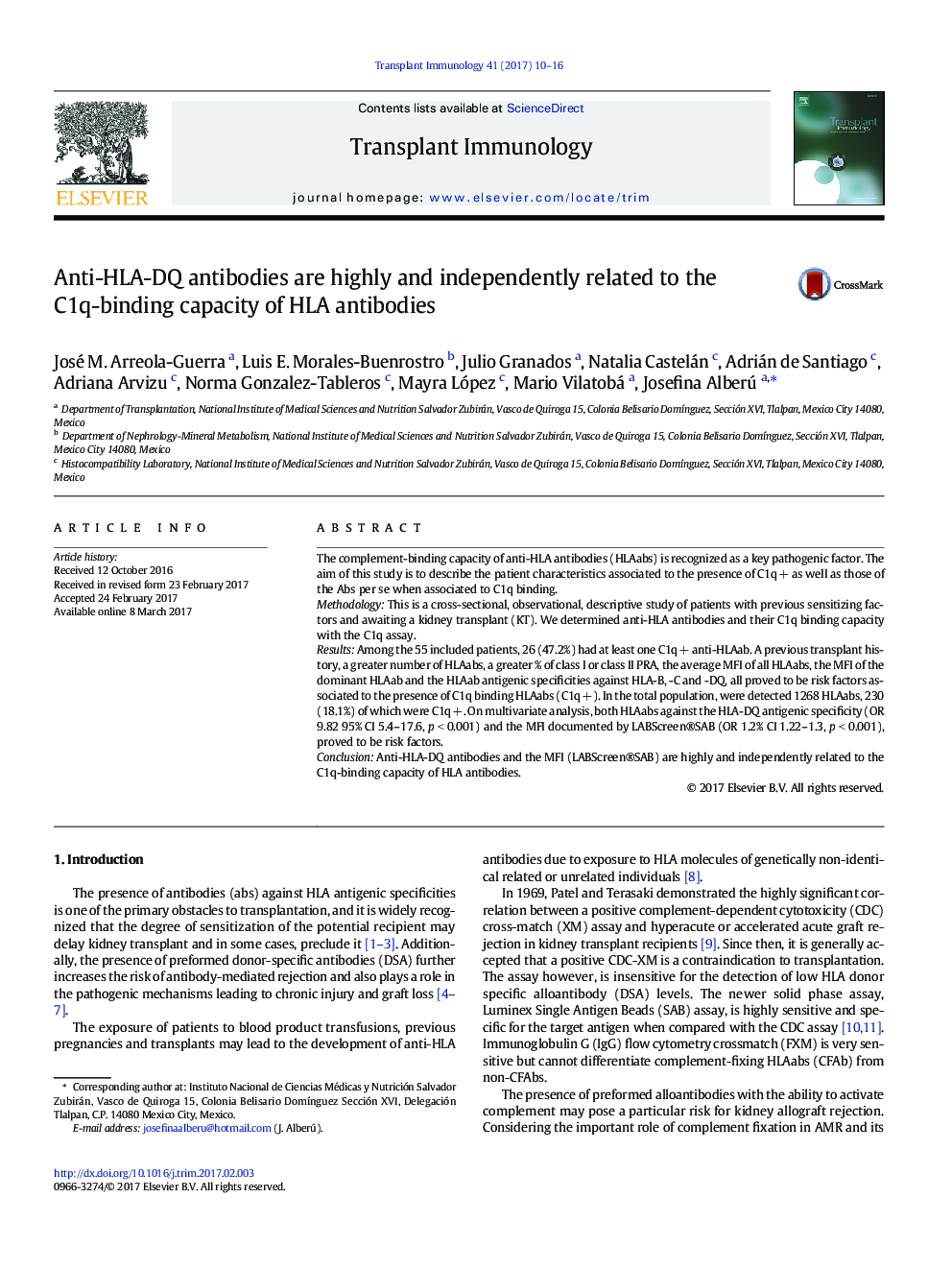| Article ID | Journal | Published Year | Pages | File Type |
|---|---|---|---|---|
| 5670456 | Transplant Immunology | 2017 | 7 Pages |
The complement-binding capacity of anti-HLA antibodies (HLAabs) is recognized as a key pathogenic factor. The aim of this study is to describe the patient characteristics associated to the presence of C1q + as well as those of the Abs per se when associated to C1q binding.MethodologyThis is a cross-sectional, observational, descriptive study of patients with previous sensitizing factors and awaiting a kidney transplant (KT). We determined anti-HLA antibodies and their C1q binding capacity with the C1q assay.ResultsAmong the 55 included patients, 26 (47.2%) had at least one C1q + anti-HLAab. A previous transplant history, a greater number of HLAabs, a greater % of class I or class II PRA, the average MFI of all HLAabs, the MFI of the dominant HLAab and the HLAab antigenic specificities against HLA-B, -C and -DQ, all proved to be risk factors associated to the presence of C1q binding HLAabs (C1q +). In the total population, were detected 1268 HLAabs, 230 (18.1%) of which were C1q +. On multivariate analysis, both HLAabs against the HLA-DQ antigenic specificity (OR 9.82 95% CI 5.4-17.6, p < 0.001) and the MFI documented by LABScreen®SAB (OR 1.2% CI 1.22-1.3, p < 0.001), proved to be risk factors.ConclusionAnti-HLA-DQ antibodies and the MFI (LABScreen®SAB) are highly and independently related to the C1q-binding capacity of HLA antibodies.
